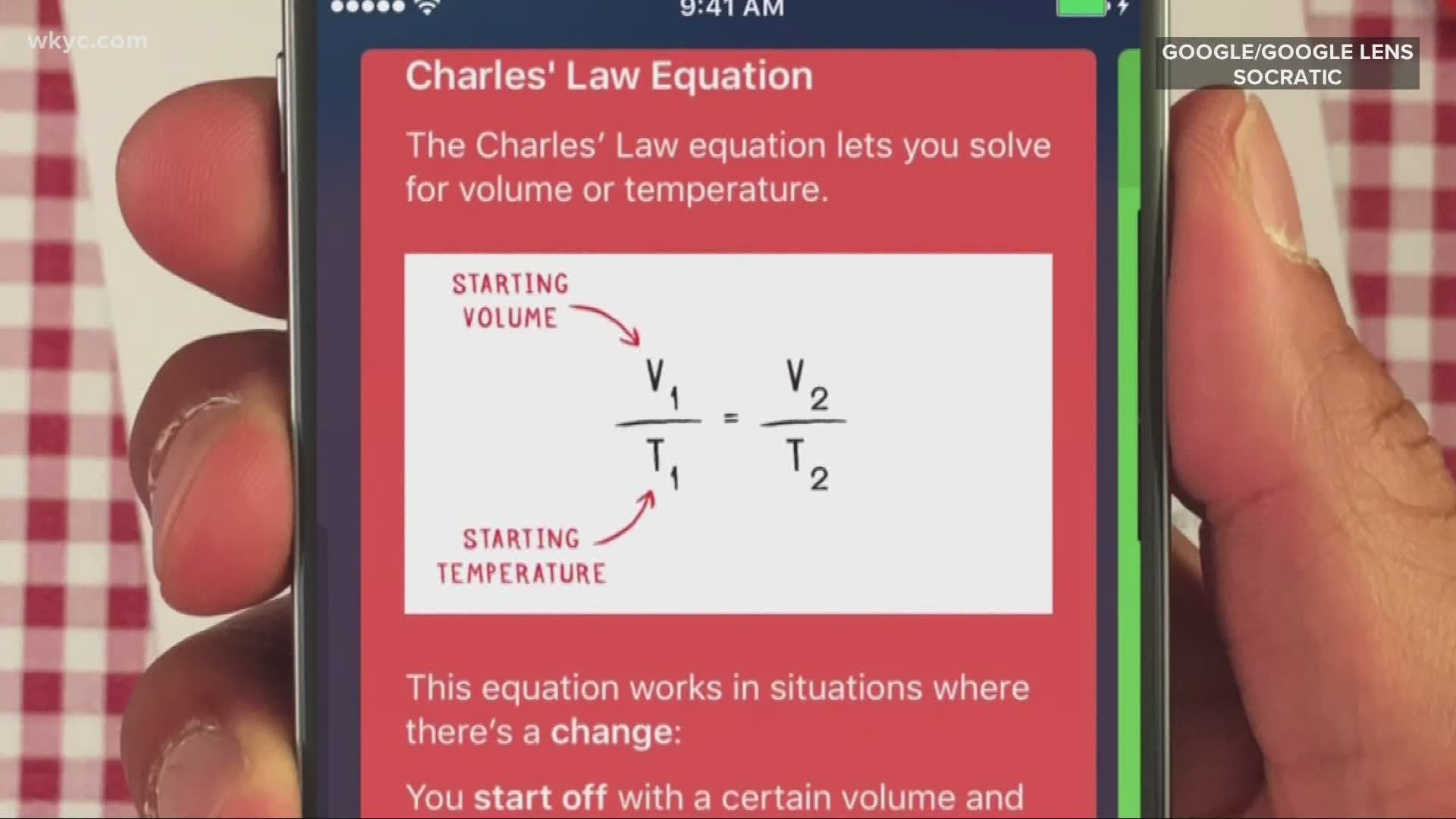BROADVIEW HEIGHTS, Ohio — Google has announced a new upcoming feature to Google Lens, that can help students, and their parents, who are struggling with math homework. And in this era of remote learning, parents like Elizabeth White are all ears.
"That's what I'm afraid of," she said with a big laugh, "that they're going to ask me for help."
We met White at Mathnasium Learning Center of Brecksville, located on Royalton Road in Broadview Heights, where tutors and students offered to test out Google's new technology.
The technology will be integrated into Google Lens, and is powered by the company's Socratic app acquisition. Users just snap a photo of a word or number problem to see step-by-step instructions on how to solve it. There are also links to resources to learn more, and some instructional videos.
The Socratic technology will be fully integrated into Lens, so there's no need to download anything. Google has not announced when the feature will fully be rolled out, so until then, users can try it out by downloading the app for Android or iOS.
Google's Socratic rivals another popular app already on the market, Photomath. So with the help of high school sophomore, Max Anderson, and Mathnasium tutor, Lana Kanawati, we put the two tech to the test.
Both allow you to scan a math problem and both offer different ways to solve it. However, after spending a few minutes with Socratic, Kanawati noticed that it didn't always recognize the math problem. When it did, she liked what she saw.
"The nice thing about this is that it explains it, more thoroughly, and it teaches you how to do it more [than Photomath], she said. Kanawati thought that parents would find the technology helpful, "if you want to learn what your kid is doing, so you can explain it to them."
Meanwhile Anderson thought that Photomath was more consistent in recognizing the math problem from a scan and more straightforward with solutions.
"I think if I were cramming for a test, and the math text wasn't helping me, I would use Socratic to understand how to do it," he said. "But if it's just one problem that I'm stuck on, I would just scan it with Photomath."
Anderson says some of his teachers discourage students from using math apps, because they could be used for cheating. But he and Kanawati say there is a place for them, if students and parents are using them to better understand a math problem.

